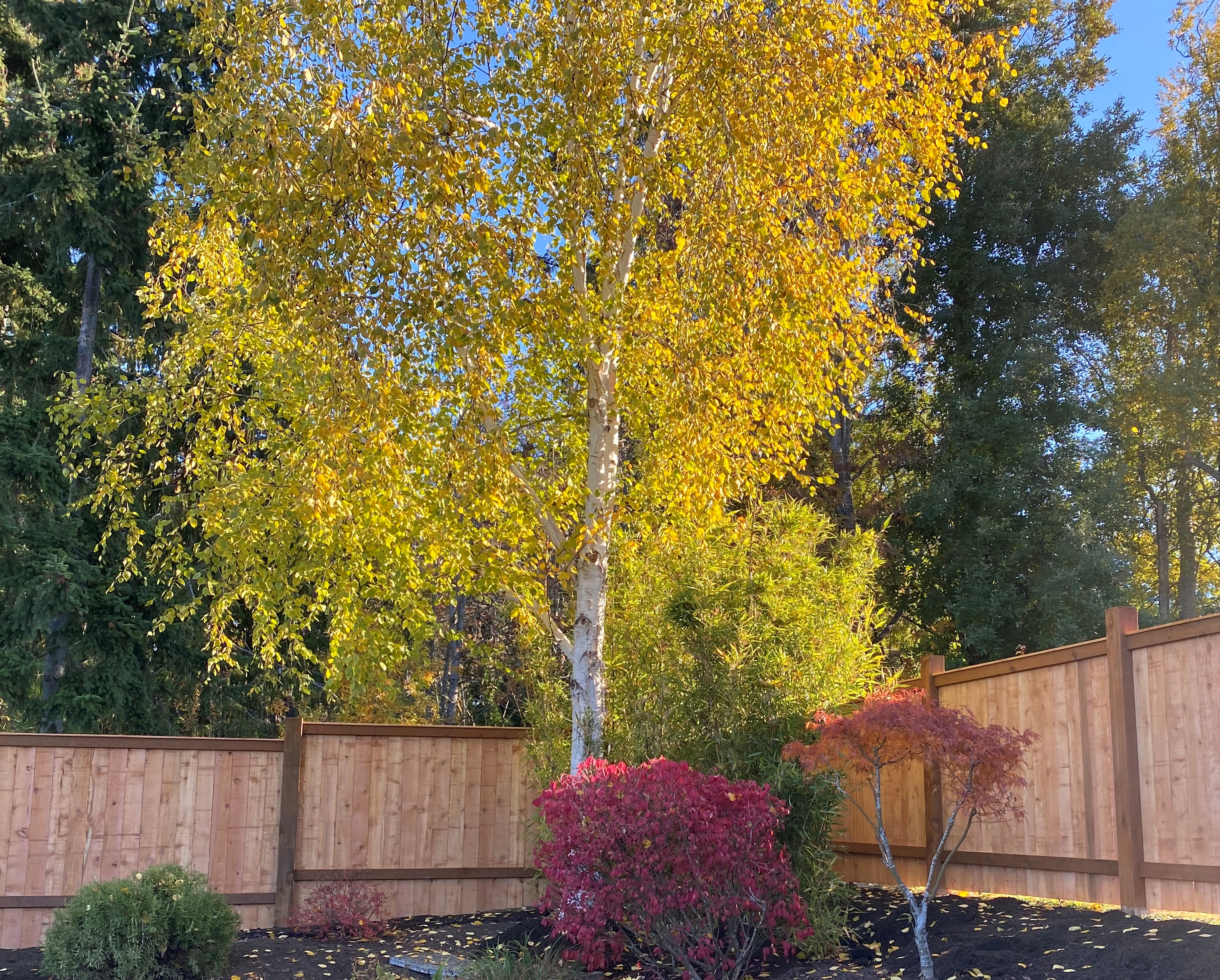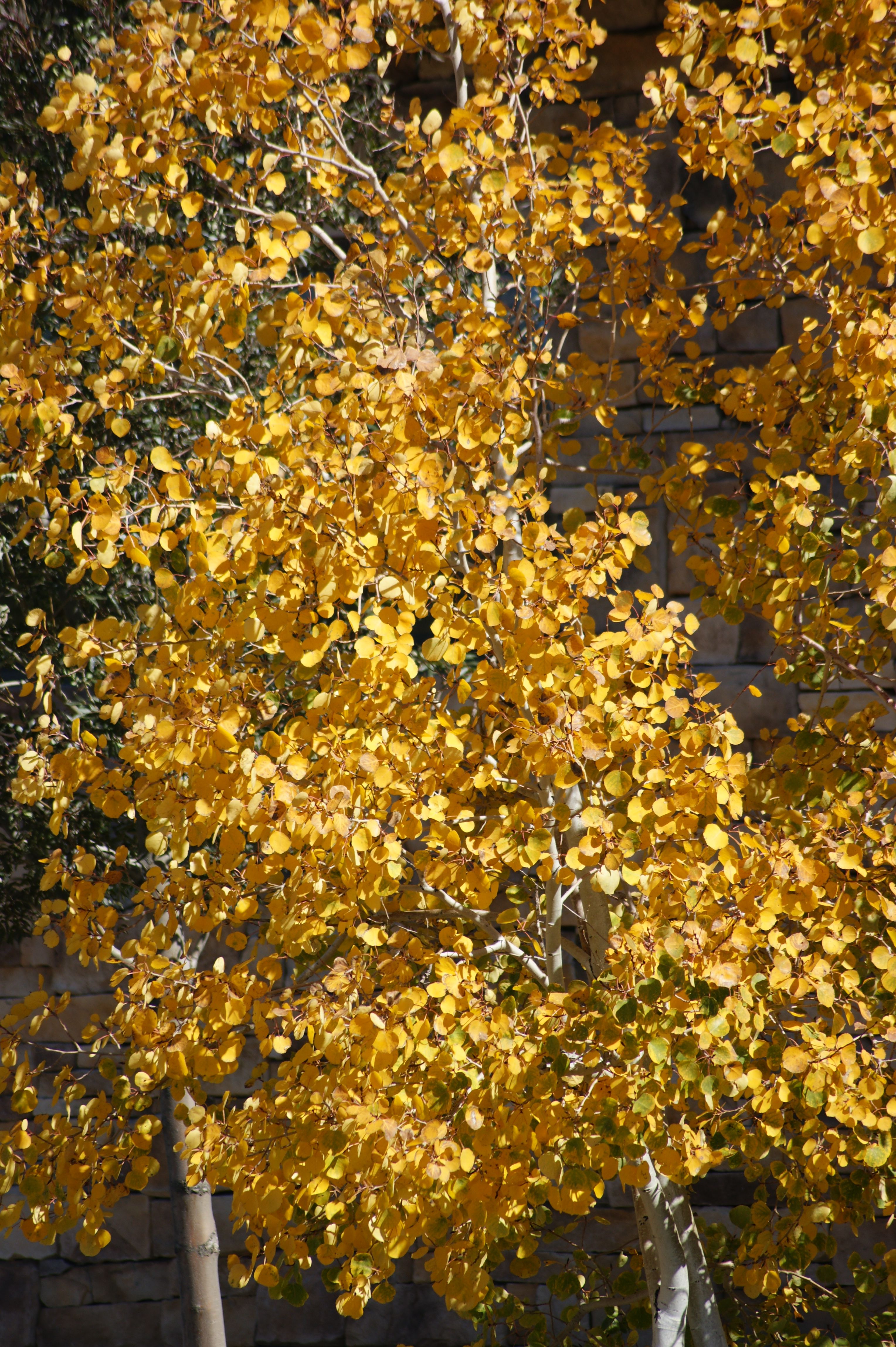by Ken Lain, the mountain gardener

The quaking aspen (Populus tremuloides), a name that refers to how its leaves tremble at the slightest breeze, is a tree in the willow family. Other common names refer to such features as its fall color (golden aspen), bark color (white aspen), or favorite habitat (mountain aspen).
It’s easily identified by its smooth, light-colored bark, interrupted at intervals by darker knots and horizontal scars. An even better-identifying feature is its flattened leafstalks, which cause the leaves to “quake” when the wind blows. The leaves are rounded to slightly triangular, 3 inches across, and finely toothed.
Botanical Name: Populus tremuloides
Common names: Quaking aspen, trembling aspen, white poplar
Plant Type: Tree
Mature Size: 20 – 50 ft Tall, 20 – 30 ft Wide
Sun Exposure: Full
Soil Type: Well-drained
Soil pH: Acidic, neutral, alkaline
Hardiness Zones: 2 – 8
Native Area: North America
How to Grow Aspens
Light
Grow quaking aspen tree in full sun for best results, although it does tolerate some shade.
Soil
Quaking Aspen prefers well-drained soil. Test the planting hole by filling it with water in the morning. If water is still pooling in the dug hole at the end of the day, you have drainage issues that will need more work.
Water newly planted trees regularly with a garden hose for at least one month (2 months in Summer). Automatic irrigation systems may not be sufficient initially. Water frequency will vary according to season, exposure and plant size.
April – Oct Aspen should be irrigated 2 x weekly
Nov – Mar Aspen should be irrigated 2 x monthly

Feed 4x Times per Year with either 7-4-4 All Purpose Plant Food, Soil Sulfur, or Humic. Here’s the recommendation by season:
Spring = 7-4-4 All Purpose Food + Soil Sulfur
Summer = 7-4-4 All Purpose Food + Humic
September = 7-4-4 All Purpose Food
December = 7-4-4 All Purpose Food
Varieties
There are several trees in the Populus genus . They are commonly referred to as “poplars,” sometimes as “aspens.” Examples include:
- Japanese poplar (Populus maximowiczii): A columnar tree with the virtue that it does not produce suckers, thereby reducing maintenance
- Lombardy poplar (Populus nigra): A columnar tree often planted along property borders, but it does produce suckers
- White poplar (Populus alba): Although Populus tremuloides is sometimes called “white poplar,” Populus alba is a distinct species. It is valued for its silvery leaves, but its downside is that it’s invasive.
Pruning
The best time to prune quaking aspen is winter because this is when the tree is dormant, meaning the tree will tolerate cuts better. Quaking aspen must be pruned after heavy winter snowfalls have damaged limbs. The damaged limbs should be cut back. Dead or diseased branches should be pruned off.

